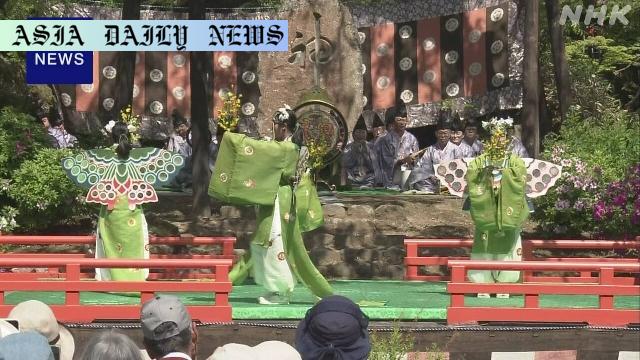Bugaku: School students delighted audiences with a vivid performance of traditional dance on a floating stage in Nara City.
- Bugaku performers showcased ancient dance traditions in Nara City.
- The event brought joy to locals on the occasion of Children’s Day.
- Students performed in colorful costumes on a unique floating stage.

Introduction: Preserving Bugaku, a Jewel of Japanese Tradition
On Children’s Day, a national holiday in Japan dedicated to celebrating the growth and happiness of children, the annual Bugaku performance at Kasugataisha Shrine in Nara City offered a spectacle of culture, tradition, and joy. Bugaku, a traditional dance with origins dating back centuries, was performed by local school students, aiming to keep this extraordinary art alive for future generations. This year’s event delighted attendees, blending Japan’s rich history with the innocence and charm of young performers, ensuring that the cherished art continues to thrive in the modern era.
The performance took place on a floating stage uniquely set up in a pond on the shrine premises. The special stage’s serene surroundings amplified the hypnotic allure of the ancient Japanese court music accompanying the dancers. Clad in vibrant butterfly costumes, young students graced the stage with synchronized steps and flowing movements, providing an enchanting display of cultural heritage. Local attendees and tourists alike gathered at the venue, relishing the chance to witness such a delightful blend of artistry and tradition.
The Allure of Bugaku: A Dance Rooted in History
Bugaku is one of Japan’s treasured traditional performing arts, deriving its origins from dance and music introduced by continental Asia during the Heian Period. Over time, it became a significant element of the Japanese court’s cultural practices. To this day, Bugaku represents a dignified and elegant art form, often performed at shrines and temples during special occasions such as Children’s Day, preserving its sacred connection to Japanese history.
This ancient tradition thrives due to the dedication of enthusiasts and community members determined to pass it down to future generations. The Children’s Day event at the shrine is a perfect example of this effort, involving local elementary and junior high school students in the rehearsals and performances. By engaging youth, the organizers ensure that the cultural essence of Bugaku remains deeply rooted in the community, fostering a sense of pride in their nation’s heritage.
The Importance of Cultural Events in Modern Society
Cultural events like the Bugaku performance at Kasugataisha Shrine not only preserve traditional practices but also offer invaluable opportunities for community members to connect with their roots. Particularly in an era where globalization tends to erode localized traditions, such events stand as a testament to cultural resilience. They provide an enriching experience for young participants, instilling discipline, teamwork, and a deeper understanding of their cultural identity.
Moreover, for the audience, whether local or international, these performances provide a snapshot of Japan’s vibrant history and the commitment to preserving its legacy. Events like this foster cultural exchange and mutual respect, bridging the gap between generations and nations. The joy and nostalgia shared by attendees highlight the undying significance of traditional art forms in modern lives.



Commentary
The Beauty of Tradition Through Young Eyes
There is something truly magical about witnessing age-old traditions being carried forward by the younger generations, and the recent Bugaku performance is a shining example of this. The effort and dedication put forth by these young students to master such an intricate art are commendable, showcasing not only their talent but also their commitment to preserving cultural values. It is heartwarming to see how ancient traditions can blend seamlessly into modern contexts, symbolizing a beautiful bridge between history and the future.
Why Bugaku Leaves an Everlasting Impression
What makes Bugaku so captivating is its blend of vibrant visual appeal and melodic court music. The costumes, the grace of the dancers, and the profound cultural history woven into every move come together to create an unforgettable experience. The butterfly costumes on this occasion added a layer of youthful charm to the performance, resonating strongly with the theme of Children’s Day. Such events remind us of the importance of culture in defining our identities and bringing communities together.
Inspiration for Future Generations
The inclusion of children in annual cultural events like this one holds immense significance. It not only preserves the tradition but also ensures its teachings resonate with and inspire future generations. The elegance and discipline instilled through practicing Bugaku can influence other aspects of the children’s lives, fostering patience, respect for heritage, and artistic appreciation. One can only hope that such efforts continue, allowing traditions to flourish centuries into the future.